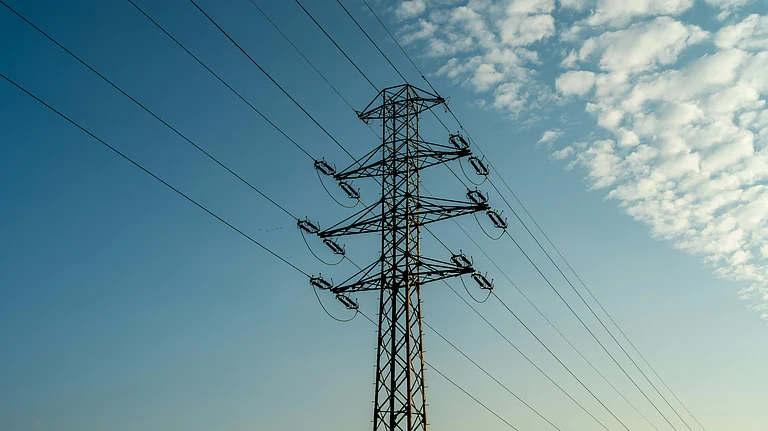India’s electric bus segment is facing a paradox. Even as private players stay away, demand for electric buses is growing, largely from state transport undertakings (STUs). Of the nearly 2 million registered buses in India, less than 7% are publicly owned and operated by STUs. The rest serve private inter-city or tourist routes. Bottom-line? Sales in the sector slid in FY25, a first since the pandemic.
About 3,570 electric buses sold in FY25, a dip of 3.5% compared to 3,700 in the previous financial year. The share of electric buses in overall bus sales also declined from 4.46% in FY24 to 3.39% in FY25, according to data from JMK Research & Analytics.
However, it is not the demand slowdown in the segment but the inability of OEMs to fulfil the orders that has weighed down on the sales figures, according to experts. This had reportedly led to the cancellation of Maharashtra government’s order of 5,150 electric buses given to Olectra Greentech.
In a post on X in May, Maharashtra’s transport minister Pratap Sarnaik noted that the company concerned had failed to supply 5,150 electric buses, and the state’s road transport corporation had, therefore, recommended cancelling the tender agreement.
However, the decision was soon reversed after Olectra submitted revised delivery timelines.
With a sales share of about 25%, Olectra was the second largest player in the electric bus market in FY25 after Tata Motors (29%), data from JMK Research & Analytics shows.
“It is no longer a demand constraint. Supply is the main issue with regard to the total industry,” B. Sharat Chandra, CFO at Olectra, had told analysts in May this year while referring to the backlog of orders with the company.
Industry experts note that the cancellation would have delayed the rollout of electric buses in the state, as it would have been difficult for any other manufacturer to meet such a large demand at short notice.
Olectra is now in the process of increasing automation at its Hyderabad manufacturing plant with robot-aided commercial production expected to commence by the end of this financial year. Automation could ramp up the annual production capacity to 5,000 from the current 200, Chandra had said during the analyst call.
“In the next financial year (FY26), we will be ramping up the production and able to meet the deliveries,” Chandra had said during the analyst call.
According to Preetesh Singh, principal at Nomura Research Institute, the industry is facing significant capacity constraints due to its import dependence for critical components including battery and motors,” he says. The two components could make up to half of the cost of an electric vehicle.
“Power train components relating to battery and some of the components relating to chassis have caused delays,” Chandra of Olectra had said in May.
Geopolitical tensions and tariff wars have made it increasingly difficult for OEMs to ramp up production in the near future.
“If they had long-term contracts with their suppliers, the situation would have been different,” says Singh, suggesting that greater localisation of the supply chain is essential to avoid such disruptions going forward.
These challenges could derail the government’s target of deploying 50,000 electric buses by 2027 under the National Electric Bus Programme. As of December 2024, only 10,870 electric buses were operational, according to a Lok Sabha reply. To meet the 2027 target, an average of 13,000 buses must be deployed annually—an uphill task under current circumstances.
“Governments usually set aggressive targets, which often get revised later—such as in the case of the FAME I and II schemes,” Singh adds.
Under FAME II, the government had aimed to subsidise over 7,200 electric buses. However, only 4,766 were actually subsidised—just 66% of the target.
The Centre has now floated a fresh tender for 10,900 electric buses to be deployed across five metro cities. While analysts question the industry’s capacity to meet this demand, companies in the segment remain upbeat about future prospects.
Some players are entering manufacturing, while others are focusing on operating electric buses for state transport undertakings (STUs).
EaseMyTrip has announced plans to invest ₹200 crore to enter e-bus manufacturing. Through its subsidiaries, YoloBus and Easy Green Mobility, the company recently secured Madhya Pradesh’s first inter-city electric bus tender.
EKA Mobility, meanwhile, will supply and maintain 70 electric buses—including charging infrastructure—for the Uttar Pradesh State Road Transport Corporation (UPSRTC). The ₹150 crore contract includes a 10-year maintenance agreement to ensure operational efficiency.
The EV startup also plans to invest ₹600 crore to expand capacity across its three production units. It currently has an order book worth ₹3,000 crore for 1,500 electric buses.
These developments come as the government earmarks significant funding under the PM E-DRIVE scheme to accelerate public transport electrification.
However, the industry’s heavy reliance on government orders presents a clear business risk.
“In the last five to six years, most deliveries have been driven by government initiatives,” says Mahesh Babu, CEO of Switch Mobility.
Switch Mobility’s order book stands at around 2,000 vehicles, but only 5–10% of that comes from private clients. “Last year, we delivered about 100 vehicles to private entities. This year, we expect to deliver 100–200 vehicles, but private orders will still account for only 5–10% of our total order book. The major push is coming from STUs,” Babu explains.
Fleet operator Chartered Speed plans to operate over 900 e-buses across 13 cities under the Pradhan Mantri e-Bus Sewa scheme. For PMI Electro Mobility, the majority of its 3,000-unit order book is also tied to government contracts.
While such contracts offer stability and market validation, experts warn that overdependence on government tenders could lead to concentration risk.
“Any changes in government policy or delays in orders can severely impact business operations,” says Saket Mehra, Partner, Grant Thornton Bharat.
“Additionally, focusing mainly on government contracts limits market diversification and restricts OEMs’ ability to tap into the private sector, which holds significant growth potential.”
The lack of targeted incentives for private operators has been a persistent bottleneck in accelerating electric bus adoption.
“The PM e-Bus Sewa scheme, with an allocation of ₹4,391 crore, primarily supports public transport bodies—leaving private players underserved,” says Mehra.
According to Babu, private sector deployment will pick up only when operators gain confidence in the market. But with the sector already struggling to meet public sector demand, it remains to be seen whether it can also absorb large-scale private demand.






























